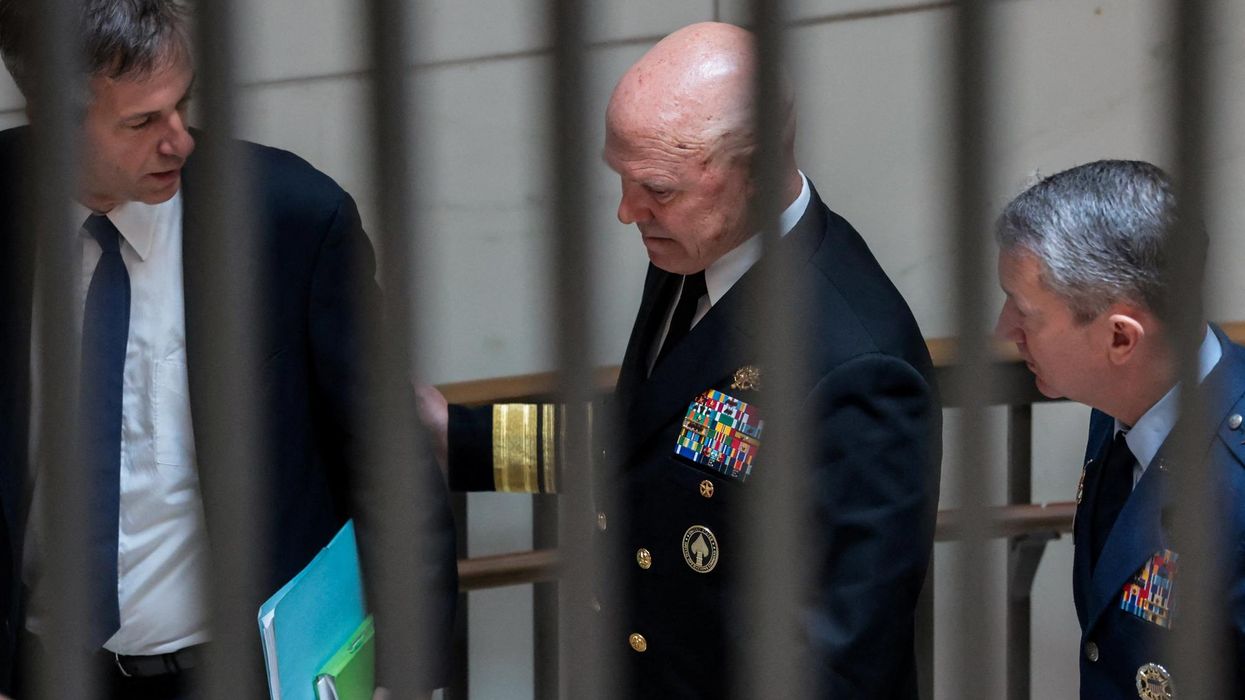The 27th United Nations conference on climate change, or COP27, meeting in Egypt, has seen two realities take hold among delegates: The goal of keeping the overall rise of global temperatures below 1.5 degrees by 2100 has almost certainly been lost; for preventing this requires cuts in emissions of 45 percent by 2030 — hardly a feasible prospect.
The second recognition is that whatever we now do, some very unpleasant consequences of climate change are not just inevitable, but are already happening. The result has been a new emphasis at COP27 on the need to build resilience against the effects of climate change in especially vulnerable regions.
These growing disasters pose severe challenges for all states. For the United States and Europe, the biggest is the consequences for mass migration, which has already reached record levels this year.
Carbon emissions have continued to increase, albeit much more slowly than previously. Carbon dioxide emissions are expected to rise by around 300 million tonnes in 2022, down from growth of nearly two billion tonnes in 2021. It seems likely that the world would have seen a much greater rise in emissions from coal were it not for the economic downturn in China, the world’s greatest burner of coal. Moreover, large investments continue to flow into fossil fuel extraction, partly due to the increase in prices generated by the war in Ukraine. The figure for these investments so far this year is up 15 percent compared to 2021.
It is estimated that the commitments to emissions reduction made so far will lead to around 2.4 degrees of warming by 2100 — much better than the projections of a decade ago but still dangerously high. The UK Met Office has warned that a rise in temperatures of more than two degrees will make more than a billion people acutely vulnerable to heatwaves and related natural disasters.
This year, the consequences of climate change have included a record-breaking heatwave in India that considerably reduced grain yields. As a result, India, which had hoped to compensate for the cut in Russian and Ukrainian grain supplies by boosting its exports, was forced to impose an export ban in order to safeguard its domestic food security. In Pakistan, the heatwave was followed by devastating floods. China and Europe too suffered serious loss of agricultural production due to heatwaves and drought, driving inflation in food prices; though this was compensated for to some extent by good harvests in Australia and Argentina. The western parts of the United States saw numerous local heat records broken, with 61 million people under extreme heat conditions. The scientific consensus is that these conditions are likely to become permanent, and also to increase incrementally.
The UN has warned that a combination of climate change and the war in Ukraine is putting an additional 45 million people around the world at risk of starvation. The largest concentrations are in Africa, including the Sahel, where the impact of drought combines with local civil wars. Apart from the humanitarian consequences, this has led to concern about radically increased political instability, and an enormous surge in migration.
President Biden has sought to signal the seriousness of his administration’s commitment by going to COP27 himself — something that allows him both to showcase his measures to limit emissions and to score points off Chinese leader Xi Jinping, who is not attending. Obviously however, delegates to COP27 are watching the U.S. midterm elections, which may deliver a severe blow to hopes for further U.S. action, at least in the short term.
The Biden administration, and some U.S. commentators, are hoping that a sort of benign competition over climate change action can be fostered between the United States and China, with each trying to outdo the other both in its moves and in its appeal to other countries for admiration and support. There are two parts to this competition. The first is comparative performance in bringing down carbon emissions. In this field both superpowers are severely hampered: the United States by domestic political divisions, and China by its continued dependence on coal. The other key and growing area of competition between America and China is in aid to poor and vulnerable countries to build resilience against the effects of climate change.
The resources available for this are however obviously severely limited by the vast sums being poured into the U.S. and Chinese militaries as part of the intensifying cold war between them. In the case of the United States, the military budget swallows almost 20 times the sums devoted to international aid — far more if additional costs like support for veterans are included. China’s withdrawal from co-operation with Washington over climate change in retaliation for House Speaker Nancy Pelosi’s visit to Taiwan also underlines the extreme difficulty of trying to work together in one field while pursuing extreme hostility in others.
Although the Biden administration’s National Security Strategy describes climate change as a “potentially existential threat,” the great majority of that document is devoted to “traditional” security threats from Russia and China that while certainly serious as far as their neighbors are concerned, cannot seriously be described as existential for the United States.
U.S. aid being given to poor and endangered countries therefore remains paltry compared to their needs, and the security threats that they are likely to pose to the West in future. At the same time, domestic U.S. political realities make it hard to imagine America generating anything like the sums required, at least for a considerable time to come.
However, what should be possible for the bipartisan U.S. foreign and security establishment is a far greater concentration on the dangers in America’s own back yard in Central America and the Caribbean. Guatemala, Honduras, and Haiti are among the countries most threatened by food shortages at present, with obvious consequences for both political stability and migration. Given Republican fears of illegal migration, and growing recognition among Democrats of how this issue is harming them electorally, it should be possible to craft a well-funded bipartisan development plan for this region.
For at present, the contrast between the sums given by Washington to Ukraine and the Middle East versus those given to America’s own neighbors is almost grotesque. The whole of Central America receives less aid than Iraq or Jordan alone. The sums in military aid to Ukraine exceed total U.S. development and humanitarian aid to the whole of Latin America and Africa put together.
A central reason for this neglect is that the United States does not face a great power competitor in its own backyard, and so Central America does not present the sort of “classical” security threats that the U.S. establishment is configured to meet and on which Biden NSS concentrates.
This underlines a fundamental problem not just for the United States but for most major states around the world, China and India emphatically included: the problem of residual elites and institutions. These were created to meet one set of challenges, and did so with considerable success; but they are simply not culturally nor professionally equipped to deal with a radically changing world. This mismatch has led to the fall of many great states and political systems throughout history, and there is no reason to think that ours are immune. We may hope that democracy will generate the necessary change — but that is indeed a hope, not a strategy.
Kyilah Terry contributed to the research for this article.
















